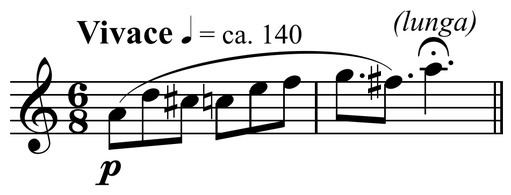 | ||
The String Quartet No. 6, Sz. 114, BB 119, was the final string quartet that Béla Bartók wrote before his death. It was begun in August 1939 in Saanen, Switzerland, where Bartók was a guest of his patron, the conductor Paul Sacher. Shortly after he completed the Divertimento for String Orchestra on the 17th, he started on a commission for his friend, the violinist Zoltán Székely. Székely was acting as intermediary for the "New Hungarian Quartet", who had given the Budapest premiere of the String Quartet No. 5. With the outbreak of World War II and his mother's illness, Bartók returned to Budapest, where the quartet was finished in November. After his mother's death, Bartók decided to leave with his family for the United States. Due to the difficulties of the war, communication between Bartók and Székely was difficult, and the quartet was not premiered until 20 January 1941, when the Kolisch Quartet, to whom the work is dedicated, gave its premiere at the Town Hall in New York City.
The work is in four movements:
- Mesto – Più Mosso, pesante – Vivace
- Mesto – Marcia
- Mesto – Burletta
- Moderato, Mesto
Each movement opens with a slow melody marked mesto (sadly). This material is employed for only a relatively short introduction in the first movement, but is longer in the second and longer again in the third. In the fourth movement, the mesto material, with reminiscences of the first movement material, consumes the entire movement. It can be seen from Bartók's sketches that he had intended the last movement to have a quick, Romanian folk dance-like character with an aksak rhythmic character, but he abandoned this plan, whether motivated by pure compositional logic or despair at the impending death of his mother and the unfolding catastrophe of the war.
In poor health and financially insecure, Bartók composed relatively little in the United States before his death in 1945, but, in the last year or so of his life, he made some sketches hypothesized to be the slow movement of a never completed seventh quartet.
The quartet was published in 1941 by Boosey & Hawkes.
